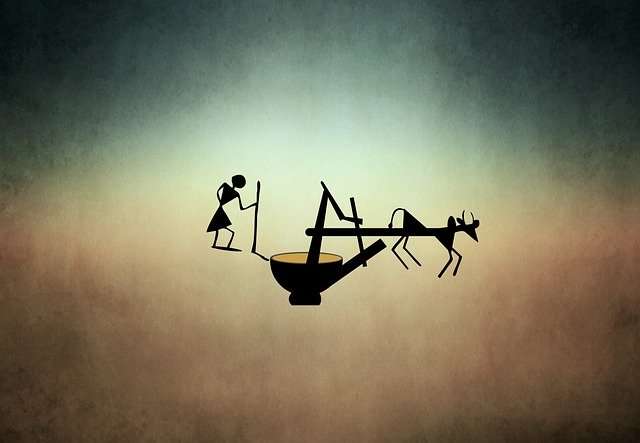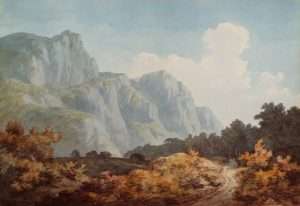There are a lot of people who are trying to find out how to do traditional art. Many of them have a hard time finding the right kind of information. But there are also a lot of people who have found new ways to make traditional art. And they are also having a hard time finding the right kind of information.
Studio artists and fine artists have been in love with oil paint for over 100 years. There is nothing wrong with that, but there are many other options available to people who want to create beautiful things with their hands. And even though you can buy many kinds of mediums at your local art store, it is still a good choice to try your hand at something new like pastel.
There are huge differences between pastel and oil paints, but there are also some similarities that might seem strange at first glance. For example, both media require skilled preparation and good tools as well as practice to get good results. However, with due diligence, anyone can produce amazing results.
Art history is filled with stories of revolutionaries who overturned centuries-old traditions. Velázquez, Manet, Picasso—all these artists made radical changes to the way we see the world. And while they might have been inspired by new technology, they were also inspired by some very old tools.
The Internet is full of blogs that cover traditional mediums like oil painting and watercolor. (There are, in fact, dozens of them.) But an old medium that’s getting a lot of attention right now is pastel, a chalk-like medium used by artists for more than 300 years. Unlike oils or acrylics, pastels don’t need to be mixed with solvents or water. They’re applied directly to the paper or canvas, which makes for quick work when you’re trying to finish a painting before you lose the light.
Artists who use pastels tend to be particularly interested in color theory: how different colors mix together and how color affects perception and emotion. The mixing properties of pastels make it an ideal tool for creating subtle shifts in mood and tone.”
Pastel has been around for a long time. It was first used in Renaissance Italy; it is the medium of such famous artists as Rembrandt and Degas, and more recently of such artists as Chuck Close and Robert Rauschenberg.
The reason for the recent surge in interest is in part because it is less demanding than oil or acrylics. “Once you learn how to use pastels, it’s really easy,” said Ms. Miller, who spent much of her working life painting with oils. “You can correct your mistakes very easily.”
A major reason for pastels’ renewed popularity, however, may be that some people think they are just plain easier to look at than paint or sculpture.
In an era when images are ubiquitous but attention spans are short, pastels — whether in scribbles on Facebook or paintings in galleries — have the potential to be more palatable than messy canvases or large sculptures that dominate a room. The abstract marks and colors are by turns soothing and stimulating.
“It’s a very intimate experience,” said David Hyman, the director of the Pace Gallery in New York.” Pastel has a lot of immediacy.”
The appeal of pastel has little to do with its inherent qualities. Rather, it offers a way for people to find a place in the art world that better suits their temperament, work and family life. Artists who found themselves flourishing in the new medium say pastel allowed them to resolve professional and personal tensions in their lives. The result is that while pastel’s champions dismiss the notion that it is easier than oil painting or watercolors, they assert that it can be as complex and challenging as any other medium.
Introduction:
A vivid palette of hues, velvety texture and freedom from permanent commitment have made pastels a particularly attractive medium for beginning artists and those looking for a change. But experts contend that these works are often dismissed as mere “kindergarten” paintings by the art establishment because they lack the heft of oil paintings and the vibrancy of watercolors.
In reality, though, many artists believe there is no medium more difficult to master than pastel. “It’s very easy to make a pastel look like crap,” said Robert Garrison, an artist who has taught at New York University since 1968. “It’s not hard to make a bad one.”
Many painters feel a sense of kinship with
On a recent Saturday, in a basement studio on the Lower East Side, an artist named Bessie Harvey was teaching five women how to make art.
Ms. Harvey started by passing out pieces of pastel paper, which is made not of wood pulp but of pure ground pigment and chalk. “You can bend it like a banana,” she said. “That’s the best part.”
Pastel has been described as being halfway between painting and drawing, and this is true in more ways than one: Ms. Harvey’s students had never used the medium before and were thrilled when she passed around some sticks of pastel crayons to get them acquainted with its texture, much like that of a crayon but stickier and less kidlike.
The first 20 minutes of the class would be devoted to “the palate,” or the color wheel that Ms. Harvey was about to demonstrate. The ideas behind this wheel have been understood for centuries; Ms. Harvey’s innovation was to put them into practice by using small pieces of colored paper for each color instead of paint or pencils or markers. She took two pieces of black paper, and one gray-green piece, and several tiny bits of blue-green paper, and taped them all together in a square
The recent explosion of digital art has brought a fresh appreciation of traditional art. It’s not that the two are mutually exclusive, but they can be viewed as opposite ends on a spectrum. Some artists work exclusively with a computer and never touch a paintbrush; others use only pencils, paints and other traditional tools to create their masterpieces. Either way, it takes time and practice to develop your skills. And for those who want to take the next step, there are plenty of books, seminars and classes available to help you improve your technique.
Treat yourself to a new hobby or kick-start your career with this convenient guide to working with pastels. It’s chock-full of information designed to help you get started with pastels whether you’re an amateur artist or a professional looking for new tools in your toolbox. With this book in hand, you’ll learn about:
The use of pastels throughout history
How pastel is different from other art mediums
The evolution of pastel
Different types of pastel sticks
How to choose the right pastel sticks for your needs
A variety of creative techniques using cleaning solutions
What brushes are best for applying pastel powder
The importance of having an artist’s easel in your home studio
In the past three decades, it has been estimated that up to 95% of all contemporary artworks have been the product of digital manipulation. A good proportion of these digital creations are the work of a small number of individuals who now dominate the global art market.
The art world is undergoing a major change. There is a growing demand for hand-made traditional works, and there is a growing audience who want to buy hand-made traditional works. A new generation has arisen with an interest in buying, collecting and appreciating this kind of artwork.


